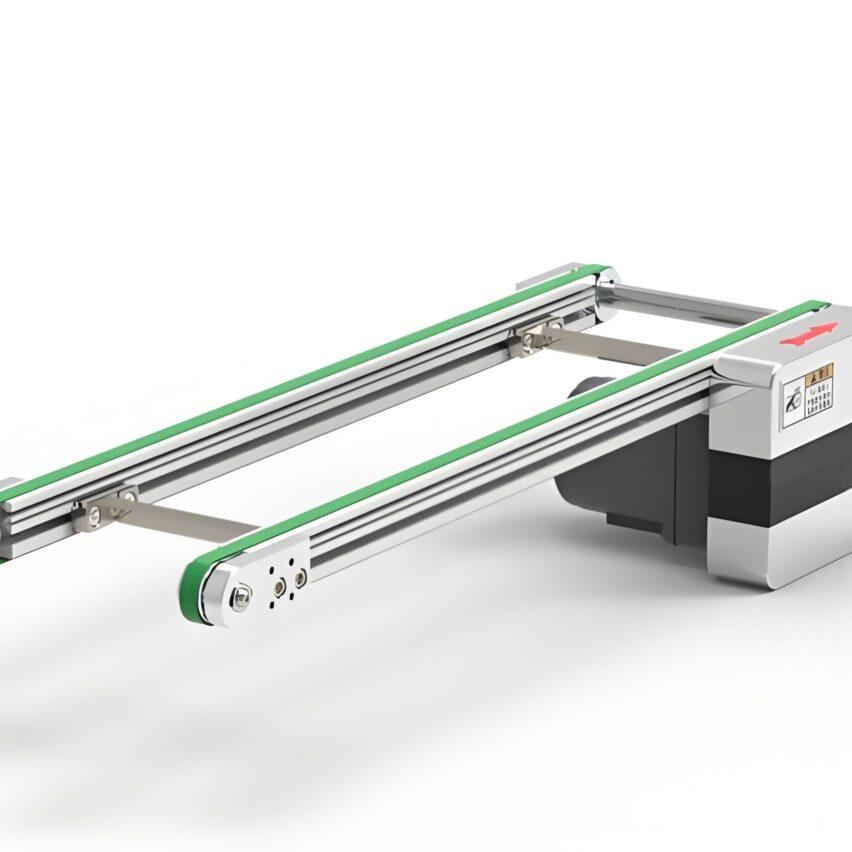I. Basic knowledge: what is the core value of the differential chain?
Why is it the "blood vessel" of the smart factory?
Differential conveyor line throughDiameter difference between roller and roller (D/d)Achieve the physical property that the speed of workpiece plate>chain speed (e.g. 3 times speed chain makes the speed of workpiece plate up to 4 times that of chain). Its core value is to solve the traditional assembly lineBeat rigidity and process congestionThe pain point - through dynamic speed regulation, so that the welding station suspended 120 seconds at the same time, the quality inspection station stopped only 60 seconds, to achieve the "underground fast and slow car type" precision scheduling.
Essential differences from ordinary conveyor lines
Ordinary conveyor lines are like "even-speed buses", with all stations starting and stopping synchronously; differential chains are like "intelligent traffic networks", with the help ofBlocker + Sensor SystemIndependently control the rhythm of each work station. After the application of an automobile factory, the production capacity soared from 82 units/hour to 120 units/hour, with an efficiency increase of 46%.
Second, the scene landing: which areas are the first to benefit?
1. Automotive manufacturing: the "nerve centre" of flexible production
- sore pointThe chassis can be assembled in 3 minutes for SUVs and 1.5 minutes for cars in hybrid production, which cannot be dynamically adapted to conventional lines.
- solution (a math problem): Differential chain fitAI dynamic speed control system, real-time recognition of models and adjustment of beats. After the introduction of a new energy vehicle factory, the production line switching time was reduced from 4 hours to 15 minutes, and capacity waste was reduced by 30%.
2. The electronics industry: the "invisible hand" of precision assembly
- sore pointChip placement requires millimetre-level positioning, and manual handling is prone to static damage.
- solution (a math problem): Engineering Plastic Roller+Conductive wheel anti-static designThe stopping accuracy of the workpiece plate reaches ±0.1mm. Semiconductor enterprises' measurement shows that the product qualification rate rises from 95% to 99.2%, and the rework cost decreases by 35%.
3. Food and medicine: "guardians" of safety compliance
- sore pointBakery products need to be cooled for 10 minutes, while the packaging section takes only 2 minutes, and the temperature difference is prone to condensation contamination.
- solution (a math problem): Differential chain zoning temperature control, cooling section automatically extends the stay, packaging section accelerates the flow. A pharmaceutical enterprise combinesIoT SensorsThe humidity exceeding the standard is automatically alarmed, and the risk of contamination is reduced by 90%.
III. Technological upgrading: how to evolve in 2025?
1. AI dynamic speed regulation: from "pre-programmed" to "self-determination"
- status quo: Most systems rely on fixed beat parameters, which need to be manually adjusted in response to unexpected orders.
- (of ball sports) break through a defense: throughMaterial Weight Sensing + Deep Learning AlgorithmsHeavy parts automatically downspeed to 1.5x anti-shake, precision chips speed up to 3x + activate damping module. A power plant measured capacity fluctuations to adapt to the speed increase of 70%.
2. The digital twin: a direct reduction in commissioning risk 60%
- Traditional Pain Points: Production line modifications require 30 days of downtime for commissioning, with million-dollar failure losses.
- new programme: Virtual pre-commissioning systems simulate congestion points in advance, e.g. predicting roller wear >98% accuracy. A company's new plant construction cycle was reduced from 6 months to 45 days.
3. Green energy saving: from "big consumer of electricity" to "carbon-neutral champion"
- data comparison: The traditional conveyor line accounts for 12% of the total energy consumption of the factory, and the differential chain breaks through three strokes:
- Servo motor regenerative braking technology recovers kinetic energy, energy consumption down 15%
- Lightweight aluminium replaces carbon steel, weight reduction 40%
- Solar panels are integrated to supply electricity, and a food factory saves $800,000 a year in electricity costs.
IV. Implementation challenges: a guide to avoiding pitfalls
Technology dependency risk
- stranglehold on core components: High-precision sensors, servo motors import dependence over 60%, domestic substitution needs to speed up.
- Proposals for breaking the ice: Preferred supportModular extensionsThe system (rails can be put together horizontally/stacked up and down) makes it easy to replace domestic parts at a later stage.
Risk of fragmentation of standards
- status quo: European standard ISO 2025 requires 0.5% speed error, the national standard GB/T 1.0% there is still a gap.
- address: Explicitly written in the contract"Measured growth rate ratio > theoretical 80%"terms to avoid performance scaling.
Global Differential Chain Market Size to Surpass by 202524 billion(8.5% annual increase), but the real winners don't belong to the hardware makers, but to those who can provide the"Dynamic Speed Regulation Algorithm + Digital Twin Service"The Integrator. Small businesses don't need to chase fully automated production lines, focusing on theServo motor + IoT moduleThe standard combination can be invested with $150,000 and paid back in 8 months. When a conveyor line can carry car chassis and mobile phone chips at the same time, the ultimate proposition of flexible manufacturing has advanced from technology to a revolution in thinking.













